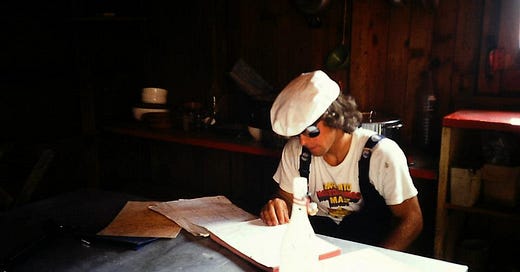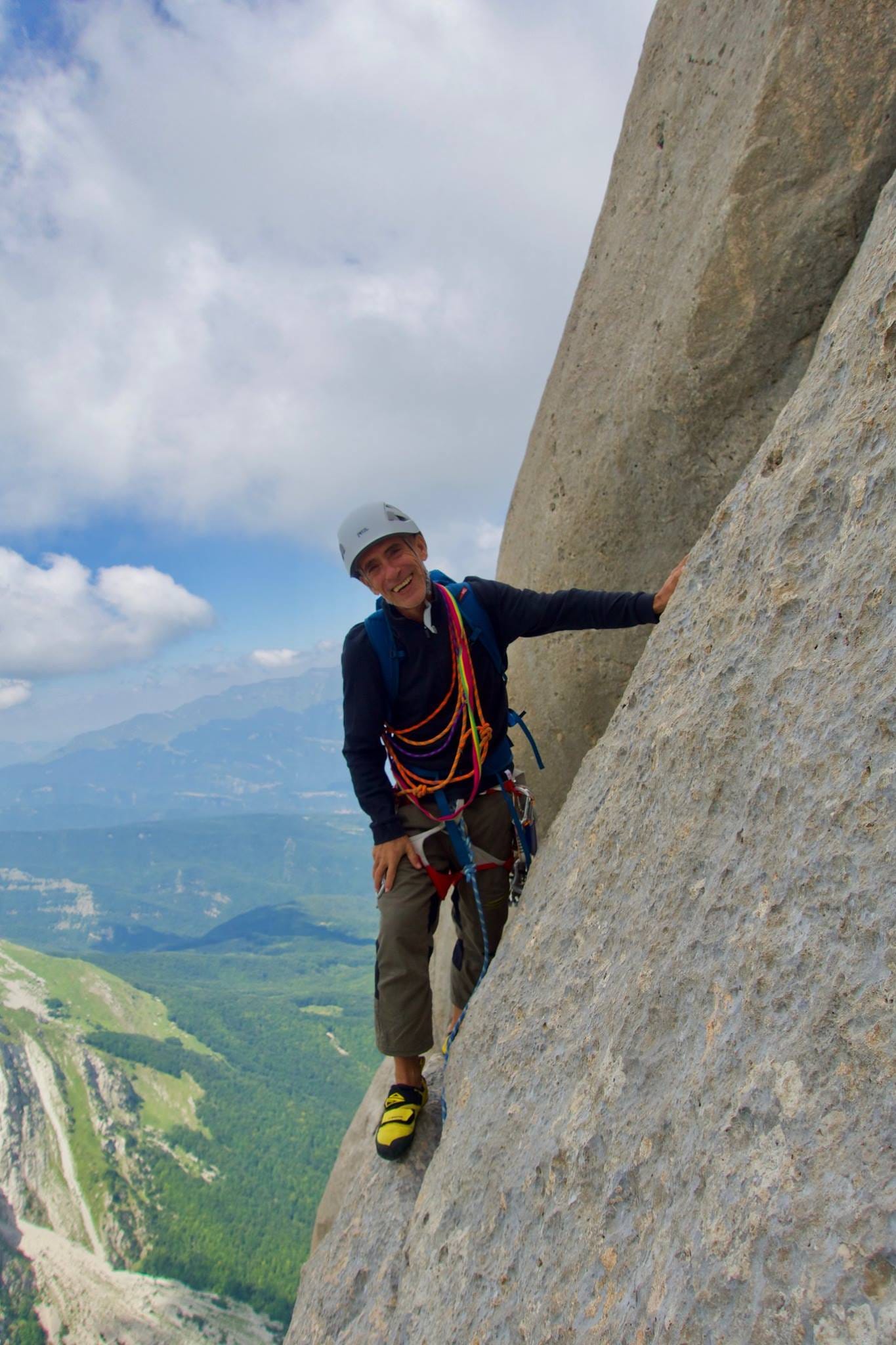Part I: Art meets climbing
A peek into the colorful life of Fabio Delisi - painter, poet, climber, businessman
I stumbled upon Fabio Delisi by accident. In my research into the young history of the outdoor crags around Batu Caves, someone mentioned that it all started with this Italian dude who moved to Malaysia in the 90s. Curious, I looked up his name on Facebook and found a profile of a “painter, photographer and poet” based in Malaysia. This is, as a few people have described, the “godfather” of sports climbing in this country.
As I would soon find out, these labels do not do Fabio justice or rather, he would not allow himself to be constrained by these identities. Born into a family with a long history of alpine traditions in Italy (his grandfather skied and climbed in the early twenties), he spent his childhood in the mountains. He learned to ski when he was just four and started rock climbing at sixteen. The peak of his mountaineering activity spans from 1978 to 1990, with more than six hundred ascents around Mont Blanc and Dolomite in the Alps, in Yosemite and Greenland. He was, by most standards, an accomplished mountaineer.

But so often in life, fate has other plans in store. When it knocks on the door with a different proposition (in the form of a guiding job offer in Malaysia), you have the option of shutting the door in its face or taking a step, and then another and another, into the unknown. These small steps (or one giant leap of faith) led to the birth of outdoor sport climbing in Malaysia.
This transition in his life was a curious one to me — I have stood often at crossroads trying to peer down one path as far as I could, immobilized, my feet rooted to the ground. How did he decide which path was right?
I found Fabio’s answer in an article he wrote (which will be shared in the next edition): the need to not get bored and be consistently passionate about what I do has characterized many of the choices I have made in life. The phrase ‘follow your heart’ may sound trite and idealistic (“the heart is unreliable!” the brain protests) but in the quest to truly live, the heart may be the best guide yet. Perhaps it is the Italian in him and the animated gestures when he talks, but he does emanate an energy and intensity in his pursuits, his views, his humor, even his generosity.
For Fabio then, this Southeast Asian chapter, and especially that in his later years, took him on a different sort of adventure from the outdoor ones he was used to in Europe — an internal, more introspective, sort of exploration.
“And then I stopped climbing for twenty years… Until two years ago.”
He picked up painting around the same time. His paintings feature motifs from a broad theme: mountains (naturally), the beach, and also towns, houses, portraits and expressions. One of my favorite paintings is one called ‘Helter Skelter’, which Fabio describes as reflecting the ‘weariness of long, too long days locked down clashing with an electrically-charged expectation of returning to the life out there, of climbing, traveling and engaging in new ventures…’. The painting is a collage of faces, eyes, noses and teeth in strange colors and shapes, like ingredients thrown into a pot and stirred somehow into a delicious broth.
The turn to painting is perhaps not something altogether new — painting is to Fabio a resistance, a mode of expression and a conduit to make a personal statement. Climbing in the seventies had a somewhat similar purpose: a form of resistance against the Cold War and an individual expression of yearning for peace and freedom. Back then, the act of scaling a mountain was also an act of defiance, a way to take a stand against a prescribed way of living – in a sense, a form of art.

In today’s day and age, one could easily take to social media to resist or start a movement. But there is something about art (movement, visual, performative, text) — that indirect expression and experience of emotion or a social commentary – which, with the right audience, inspires them to just pause in their lives and consider. Is that why the best routes keep us up at night? Why we are entranced by how the best climbers move, and speak of them as ‘climbing with grace’ or ‘dancing’ up routes? Was that why we were all transfixed by the World Cup finals, by Messi and Mbappe’s performance? For a few minutes, we were lifted from the minutiae of daily life and thoughts, lost in awe.
An equivalent in climbing is the feeling of sending a mega classic or an extremely well-set route (the lack of a guideline to define “well-set” points to how much of an art form it truly is) — the feeling lingers, even days after. This, to me, approaches art.
Painter, poet, climber, businessman, or climbing and art – these are labels that don’t seem to belong together. But Fabio is all of them, and more. This tapestry of his colorful life is bound by one common thread: a single-minded pursuit to live a happy life.
“When I climb, I want to enjoy. If I pass, I pass. If I don’t pass, I go and do another one. That’s how I do it now.”




